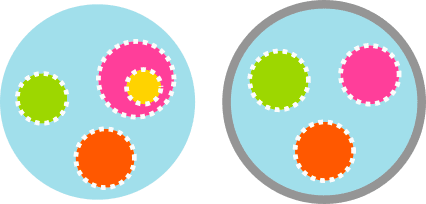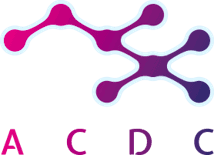Microfluidic droplet generation to produce artificial cells: ACDC
Microfluidics allows the generation of specific-size droplets and monodisperse emulsions in a very controlled way.
This technology is used in the ACDC project to produce artificially engineered cells.
This project is completed now. If interested, feel free to contact us.
Artificial cells with distributed cores to decipher protein function: introduction

ACDC project aims to develop a new technology for creating simple artificial cells made of liquid-based capsules. These capsules will contain interactive and multifunctional cores (sensing, actuating, reporting, energization, and barcoding functions) and communicate micro-laboratories.
This new technology reproducing living cells will help identify new targets for future drugs and conduct drug screening against the identified proteins.
Artificial cells with distributed cores to decipher protein function: project description

The capsules will be made using microfluidics technologies, particularly droplet generators based either on flow-focusing geometries to obtain the cores of the future capsule or on an innovative bat-wing junction to encapsulate these cores into the capsule.
The new generation of microfluidic devices designed for this purpose will be made by 3D printing, allowing the construction of 3D structures to produce artificial cells more effectively.
In the ACDC consortium of 6 European partners, we will design the chips and optimize fluid handling to produce cells.
Elveflow microfluidic flow control system will help us precisely adjust each liquid’s volume (matrice and reagents) over an elongated duration to obtain reproducible capsules and droplets. We will also perform on-chip-specific DNA labeling of the celand as drug screening.
As a result of the ACDC project, we developed the artificial cell droplet pack. The project also helped develop other paks: a cancer cell migration pack, a neutrophil chemotaxis pack, a pack for biomechanics and modeling in mechanobiology, and the giant unilamellar vesicle production pack.
This project has received funding from the European Union’s Horizon 2020 research and innovation programme under grant agreement No 824060 (ACDC project).

